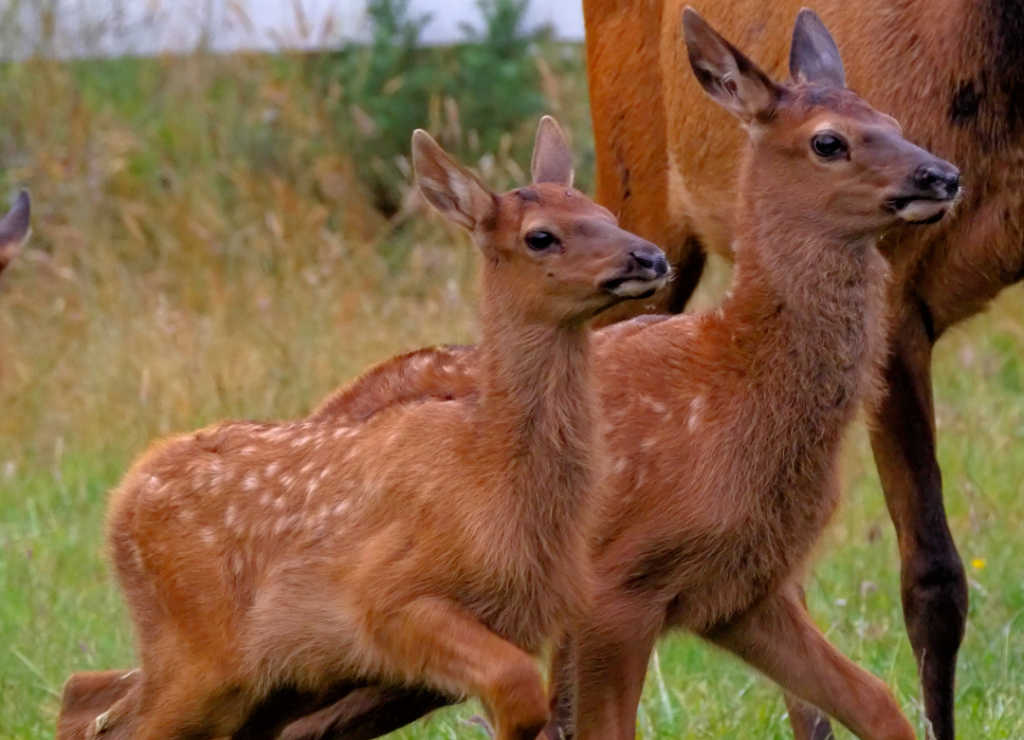One of the most heartwarming signs of spring in the Greater Yellowstone Ecosystem is the arrival of new life. The Wildlife Expeditions team is thrilled to announce that calving season is officially upon us, bringing with it the adorable sights of newborn bison, wobbly elk calves (born in the second half of May and early June), and their long-legged moose neighbors (born in late May/early June).
The landscape is buzzing with anticipation as mothers carefully tend to their vulnerable newborns. These early weeks are crucial for the survival of these young animals as they navigate their first steps and learn essential survival skills.
Who might you see during calving season?
- Bison calves: These small newborns, with their reddish-tan coats, are a frequent and delightful sight this time of year. Bison mothers usually only have one calf in April or May. They have a wider range of calving than most of the wild hooved mammals. Calves stay close to their mothers, often nestled into the grass and sagebrush. (Source: National Park Service: Bison Ecology)
- Elk calves: Born a bit later in the season, typically late May and June, during peak vegetation. These amazing creatures are born scentless thanks in part to Mother Elk eating the placenta and umbilical cord and licking the calf free of birthing fluids, which helps them hide from predators. Elk calves are often hidden by their mothers in secluded areas. You might catch a glimpse of a spotted calf cautiously following its mother through the meadows. (Source: National Park Service: Elk)
- Moose calves: These gangly youngsters, with their disproportionately long legs, are a special treat to spot. Moose mothers are fiercely protective of their calves (typically 1 or 2), so maintaining a respectful distance is paramount. They are often found in willow thickets near water sources. (Source: National Park Service: Moose)
Other spring babies potentially visible this time of year include bighorn sheep lambs (typically in areas with steep rocky cliffs and sometimes on their way to the high country), black & grizzly bear cubs, wolf pups, pronghorn fawns, fox kits, and so many others! * Please remember to keep your distance from all animals, especially those new to the world.
Witness this incredible time of year with us. Our Grand Teton National Park tours are running now, offering fantastic opportunities to observe these newborns in their natural habitat under the guidance of our experienced naturalists. And exciting news for those eager to explore further north – our Yellowstone National Park tours begin on May 10th.


